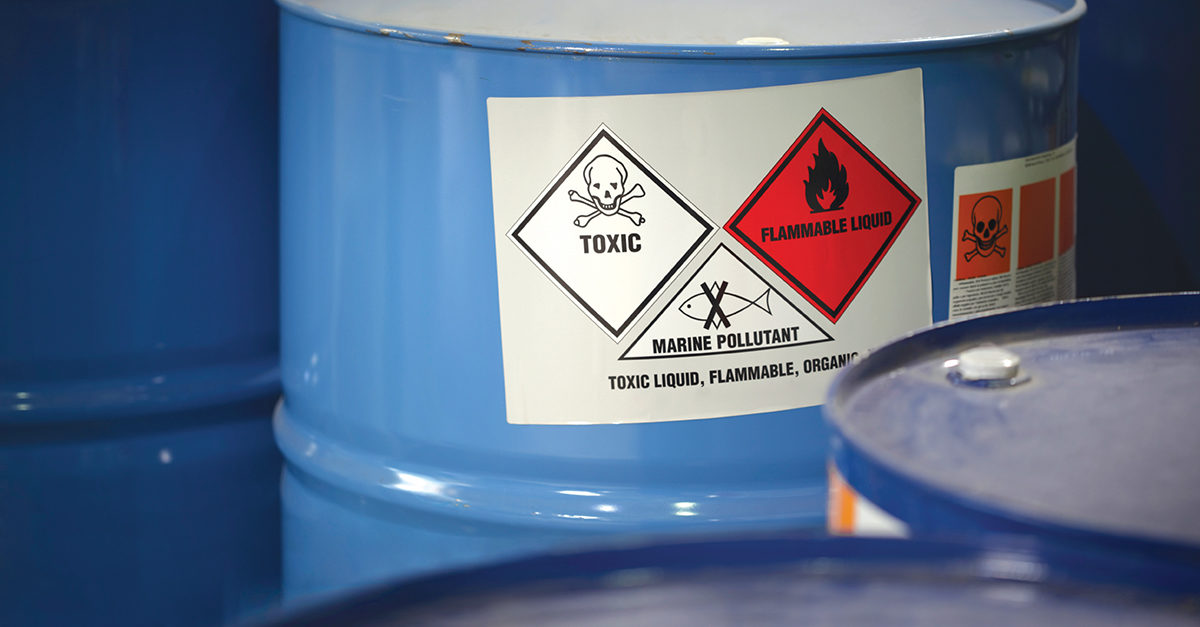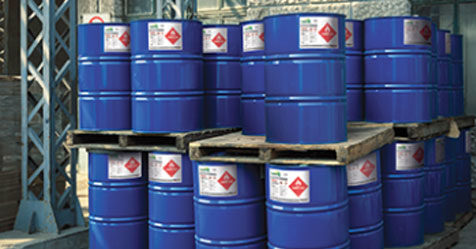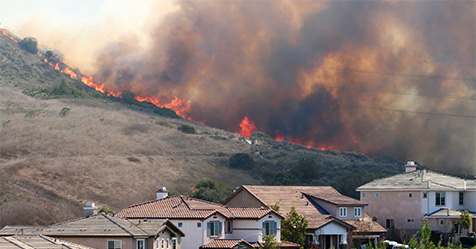At a recent seminar on U.S. Occupational Safety and Health Administration (OSHA) compliance, I was surprised by the number of attendees that were not aware of the amendments to the Hazard Communication Standard (HCS), nor their effective dates for implementation. Attendees were from a broad range of businesses and not limited to the cleaning industry.
Under revisions to the HCS—an OSHA regulation designed to ensure that employees know the risks and identities of chemicals they encounter in the workplace—manufacturers, importers, distributors, and employers all have responsibilities. These amendments to the HCS have been adopted and published as HCS 2012, and are intended to align our system of hazard communication with that of the Globally Harmonized System of Classification and Labeling of Chemicals (GHS). OSHA published the GHS revisions to the HCS in March 2012 and most of the major provisions became effective June 1, 2015.
The development of the GHS began more than 20 years ago by the United Nations; the goal was to provide more consistent information about the hazards of a product to the end users of chemicals. Proper use of this enhanced information should help workers to more safely execute their daily duties.
Consider that there are more than 80,000 different chemicals used every day in workplaces across the nation—that is a pretty significant number and could weigh heavily on facility managers or building service contractors (BSCs), depending on how many chemicals their workers encounter on a daily basis.
While this article will address the responsibilities of employers and their Hazard Communication Program, we will first look at implementation dates and requirements that have passed or are still pending.
Did You Miss These Deadlines?
All employees should have already received training on the GHS amendments, new labeling elements, and Safety Data Sheets (SDS); the deadline for this was December 1, 2013. This introduction to GHS was intended to make employees aware of the impending changes so they would have some familiarity with the new labeling and other information when the new labels started arriving in the workplace. If your organization has not completed this training, you should look to accomplish it soon.
Manufacturers and importers had a deadline of June 1, 2015, to update the information on what was formerly known as the Material Safety Data Sheet (MSDS) and compile that information into a new 16-section format SDS. Labels should have been updated based upon the new classification requirements. All products shipped on or after June 1 should contain the new labeling.
However, in an Interim Enforcement Guidance memo dated May 29, 2015, manufacturers have been granted an extension to this deadline—sort of.
Exceptions to the Rule
Products that were already manufactured, packaged, or palletized for shipment prior to June 1, 2015, could be shipped after that date without complying with the new requirements. In addition, OSHA will not cite a manufacturer for failure to comply with the GHS labeling and SDS requirements for those products where the manufacturer or importer did not receive the necessary information to update the labels and SDSs from their upstream suppliers, provided the manufacturer exercised reasonable diligence and good-faith efforts to obtain the information.
As of June 1, 2015, distributors were responsible for making SDSs available to their customers. Many are still trying to fully update their information, and OSHA likewise has relaxed its enforcement policy for distributors that are not able to comply with the SDS requirements because of their suppliers. Delays from manufacturers have created delays for distributors. That being said, the responsibility remains, and your distributor should be able to tell you where it is in the process of reaching compliance.
Another complication in this process is the use of computerized services, with organizations facing a backlog of new information to upload. Again, suppliers should be able to communicate where they are in the process of updating their information.
Distributors originally had until December 1, 2015, to deplete their inventories of products with the older labeling. While this deadline generally still stands, exceptions will be granted up to December 1, 2017, for those products delayed by the above process, provided that reasonable diligence and good-faith efforts can be documented.
If a manufacturer or importer is waiting for information, it will have six months to develop a new SDS from receipt of the information.
Your HAZCOM Program
Every employer (company) is required to update any alternative workplace labeling and its Hazard Communication Program by June 1, 2016.
Larger organizations may have a safety or loss prevention department that will be on top of this issue. Some organizations may be wondering if they even have a Hazard Communication Program to update. Rather than worry about what was not done yesterday, focus on getting this right today. If you are a BSC and your customers have not asked you for your program, they will.
The OSHA website (www.osha.gov) is a wealth of information. From the homepage, type “hazcom” in the search box and you will be directed to numerous resources. Additionally, if you visit the homepage and type in “sample programs,” you should see a list; Hazard Communication Program is the third or fourth on the list. This sample program is basically a fill-in-the-blank document, but caution: You must verify its accuracy for your situation.
Other resources include fact sheets that you can print and post on safety bulletin boards or use to guide a brief safety talk with your staff. There are also informational tools called Quick Cards that you can print and post to help keep employee comprehension at peak levels. Consider the following: If a safety official asked one of your employees what a particular pictogram meant, could they answer correctly?
Guidance from OSHA
The following italicized text has been taken from the OSHA publication Small Entity Compliance Guide for Employers That Use Hazardous Chemicals, and provides six steps to guide you in creating a Hazard Communication Program. This booklet can walk you right down the path of compliance, including sample programs and a quick guide to training. Several of the bullet points are self-explanatory, others deserve more discussion. (Editor’s note: Supplemental tips from the author are included in regular text with the items that require more discussion.)
Learn the Standard/Identify Responsible Staff
- Obtain a copy of OSHA’s Hazard Communication Standard. Be sure to obtain the 2012 version.
- Become familiar with its provisions.
- Make sure that someone has primary responsibility for coordinating implementation.
- Identify staff for particular activities (e.g., training). Depending upon the size of your organization, there may be several people with some level of responsibility.
Prepare and Implement a Written Hazard Communication Program
- Prepare a written plan to indicate how hazard communication will be addressed in your facility. This does not need to be a literary masterpiece. Simply state what will be done, who is responsible, and how they will communicate the information.
- Prepare a list or inventory of all hazardous chemicals in the workplace. This master inventory list is critical. No product should be permitted in the workplace that is not on this list. No product should be on this list without a corresponding SDS. If you change products, make the necessary change to the list, make certain to obtain the new SDS, and be sure to communicate the details to your staff.
Ensure Containers are Labeled
- Keep labels on shipped containers.
- Label workplace containers where required. Contact your supplier for secondary labels or containers. If you make your own labels, a red diamond must surround the GHS pictograms; black and white copies will not be sufficient.
Maintain Safety Data Sheets
- Maintain safety data sheets for each hazardous chemical in the workplace. Maintaining an accurate master inventory list is an easy way to make sure you have all of your SDSs.
- Ensure that SDSs are readily accessible to employees. Often, in an effort to be thorough, an organization tries to maintain a binder in every closet or storage facility. This can become an administrative nightmare. SDSs must be accessible, but that does not mean each employee needs a personal copy. Some organizations provide this information via computer access, which is fine, as long as computer access is available at all times to all employees.
Inform and Train Employees
- Train employees on the hazardous chemicals in their work area before initial assignment, and when new hazards are introduced. Employees deserve to know the hazards and how to protect themselves from them. Proper training demonstrates the value the organization puts on its employees and their safety. Be sure to document the training with sign-in sheets, course outline, handouts, etc.
- Include the requirements of the standard, hazards of chemicals, appropriate protective measures, and where and how to obtain additional information.
Evaluate and Reassess Your Program
- Review your hazard communication program periodically to make sure that it is still working and meeting its objectives.
- Revise your program as appropriate to address changed conditions in the workplace (e.g., new chemicals, new hazards, etc.).
Is GHS the Law of the Land?
In some states, the state-level safety organization takes precedence over OSHA and may not yet address the GHS amendments. Under the law, state regulations must be “at least as effective” as OSHA regulations, or more stringent. If GHS is not the law of the land in your state yet, it will be soon. In the meantime, you should comply with the federal requirements.
The GHS amendments to the Hazard Communication Standard are creating some administrative angst, but in the long run, they will help set the stage for a safer workplace. As with any safety item, if we don’t use it properly, it won’t help much at all.
At the end of the day, we are talking about employee safety. If you have not looked at your Hazard Communication Program lately or don’t know where it is, today should be the day you start working on compliance.




